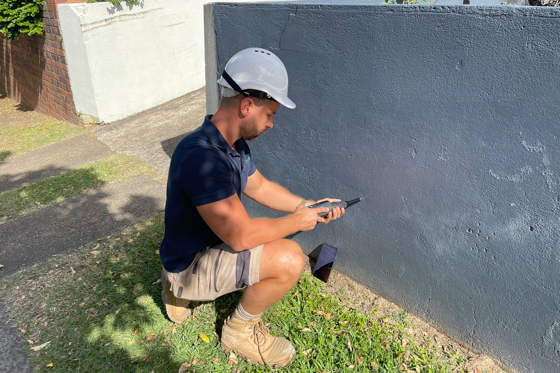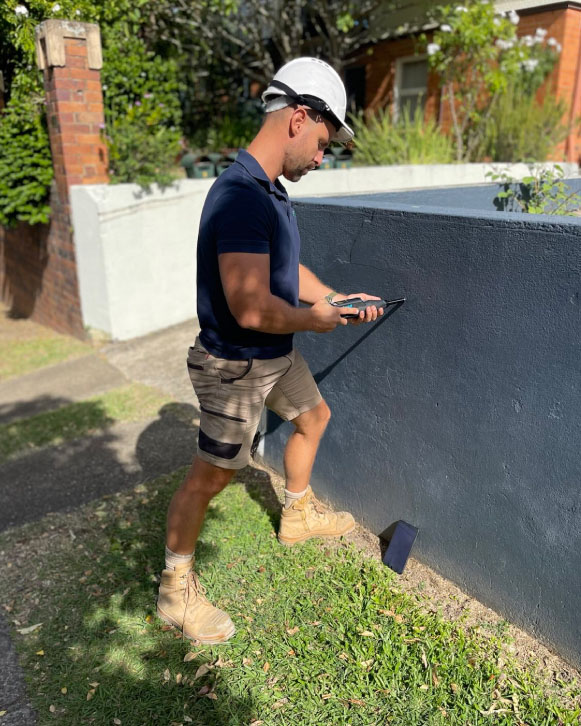Suspended concrete slabs play a crucial role in the structural integrity of a building. Therefore, a thorough inspection is critical in maintaining its longevity and safety. Here are the five key aspects to consider when inspecting a suspended concrete slab.
Here are the five key aspects:
Cracks and Surface Damage
The first point of inspection should be the slab surface. Carefully examine the entire surface for any visible cracks or chipping. It is important to note that cracks can be indicative of underlying structural issues, such as tension in the concrete, substandard concrete mix, or an inadequate curing process. By documenting the specific location and length of the cracks, you will be able to assess their severity and potential risk more accurately. This level of detailed evaluation will ensure a comprehensive understanding of the condition of the slab and enable appropriate measures to be taken if necessary.
Uniformity and Flatness
The flatness and uniformity of the slab surface are crucial factors that can reflect the overall quality of the concrete pour. It is recommended to use a straight edge or laser level to meticulously check for any discrepancies or irregularities in the surface. These deviations may be indicative of poor workmanship or potential slab settlement, which, if left unaddressed, could potentially lead to more serious issues in the future, including structural integrity concerns and compromised durability. Therefore, ensuring a properly levelled and uniform concrete surface is of utmost importance for long-term stability and performance.
Moisture Levels
Excessive moisture can gradually cause degradation of concrete, compromising its structural integrity over time. This moisture buildup may also be indicative of inadequate water sealing or potential issues with the underlying soil moisture content. To accurately assess the moisture levels across the slab and identify any areas of concern, it is recommended to utilise a reliable moisture metre. This tool enables precise measurements, allowing for proactive steps to address and rectify any moisture-related issues promptly.
Reinforcing Steel Exposure
The reinforcing steel or rebar within your slab should not be visible or exposed. If you notice any signs of rusting or exposure of the rebar, it indicates concrete spalling, which is commonly caused by the ingress of water. This can lead to significant structural issues, compromising the integrity and safety of the structure. It is crucial to address this issue promptly to prevent further damage and ensure the long-term durability of the slab.

Drainage and Slope
To ensure effective drainage, it is crucial to make sure that the slab is appropriately sloped. When water pools on the surface, it can gradually increase moisture levels within the concrete, potentially leading to long-term damage. To assess the slope, use a level and carefully observe the slab during wet weather conditions. This will help identify any potential drainage issues that may need to be addressed. Taking these precautions will help maintain the integrity and longevity of the concrete structure.

Other Aspects to be Aware Of
In addition to the five critical inspection points, there are other elements to keep in mind while evaluating the condition of a suspended concrete slab.
Understanding the load-bearing capacity of the slab is vital as it assesses the maximum weight the slab can safely sustain without risking structural integrity. To ascertain this, one may need to consult the original architectural plans or engage a structural engineer. The overall quality of the concrete used plays a significant role in the durability and longevity of the slab. This includes factors such as the mix ratio, the type of aggregate used, and the curing conditions. If there are doubts about the quality of the concrete, it would be advisable to conduct a comprehensive laboratory test. The age of the slab can impact its condition. Older slabs may show more signs of wear and tear, and hence, they need a more frequent and detailed inspection. An understanding of the slab’s history, including any repairs or modifications, can also inform the inspection process.
The Importance of Regular Inspections
Regular inspections of a suspended concrete slab are pivotal for maintaining the structural integrity of a building. Not only do they facilitate the early detection of potential issues, but they also ensure the slab remains in optimum condition, thus prolonging its lifespan. Without regular inspections, minor issues like small cracks or slight moisture can escalate unnoticed, eventually leading to significant structural damage. These damages can be costly to repair and may pose safety risks. Regular inspections also help building owners comply with safety standards and regulations, thereby avoiding penalties. Lastly, routine checks can provide peace of mind that the building is safe for its occupants.
Importance of Professional Inspections
Professional concrete slab inspections offer an unmatched depth of expertise and knowledge in assessing the condition of a suspended concrete slab. Professionals in the field possess the necessary training to accurately identify and gauge the severity of potential problems. Their meticulous examination can reveal issues that may be overlooked in a casual inspection, such as minute cracks, subtle changes in the flatness, or hidden moisture problems. Additionally, they have access to advanced tools and techniques for thorough testing and analysis, providing a more comprehensive evaluation of the slab’s condition.
Moreover, professional inspectors understand the compliance aspects of building codes and safety regulations, ensuring that your slab meets all necessary requirements. They can also provide detailed documentation of the inspection, which can be invaluable for insurance purposes, resale value, or future maintenance plans. Therefore, while regular self-inspections are crucial, they should ideally be complemented with professional inspections for a complete maintenance plan.
The structural integrity and longevity of a suspended concrete slab rely heavily on regular, meticulous inspections. These not only aid in identifying minor issues before they escalate into major, more costly problems but also ensure compliance with safety regulations and prolong the lifespan of the slab. While self-inspections play a fundamental role in maintenance, they should ideally be supplemented with professional inspections. The expertise, advanced tools, and thorough analysis that professionals bring to the table offer an in-depth, comprehensive evaluation of the slab’s condition. This aids in maintaining the building’s structural integrity, ensuring safety, and providing peace of mind to the occupants. Therefore, a balanced approach combining both self and professional inspections is strongly recommended for the overall maintenance and longevity of a suspended concrete slab. Get in contact with us today and let’s work together to mitigate underground asset accidents.